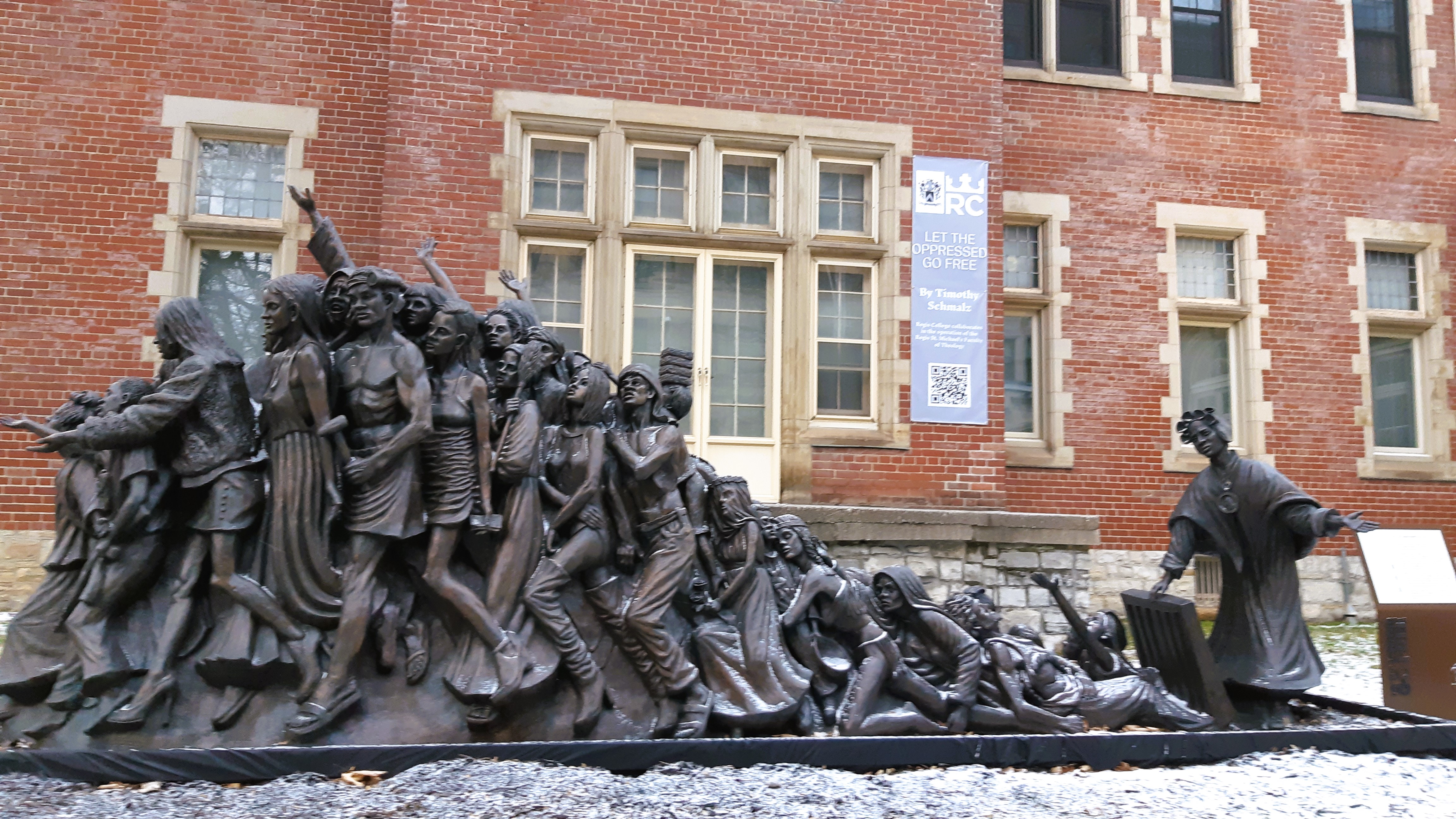So many American Robins twittered in the trees that I had to stop. There were about 50 of them and it was the largest flock that I had ever seen. A row of trees, with ripe red berries, were in front of the university building. I had scarcely noticed them until the flock of robins squealed about their treat.
I stopped again a bit further along the street, this time to stare at a new bronze sculpture. The main figure was a Black woman dressed in clothes from the nineteenth century. Bonnet, long skirt, and heavy boots. Blouse buttoned up to the neck. Her face was serious. She leaned forward, opening a trap door, and out of it emerged a multicultural group of people from different time periods. All were marching to the future. Towards freedom.
The sculpture was to St. Josephine Bakhita, the patron saint of human trafficking. The massive sculpture is called Let the Oppressed Go Free, and it is by Timothy Schmalz. It is on the lawn in front of St. Regis College, University of Toronto.
Bakhita was born around 1869 in the Sudan. She was kidnapped, aged about nine, by Arab slave traders. A year or so earlier, they had raided her village and kidnapped others, including her older sister.
When Bakhita was born, Sudan and the rest of the Horn of Africa, was in turmoil. Independent kingdoms were invaded by Turkey, Egypt, Belgium, France Britain, and Italy. It was part of a larger conflict over control of the headwaters of the River Nile, which rises in Sudan. The River Nile feeds the Aswan Dam and the all-important Suez Canal.
From Darfur, Bakhita was forced to walk or ride a camel about 1,000 kilometres to Khartoum. In the next dozen or so years, she was sold five times in the Sudan to Arab and Turkish enslavers. Then she was sold to an Italian consul who took her to Venice. Throughout her enslavement she laboured in childcare and domestic work. A brief stay in a Venice convent, to rest before more travel, was Bakhita’s path to freedom. She refused to leave. She converted from Islam to Christianity. Her enslavers would not give up their human property. Bakhita had to petition the King of Italy in 1889 to gain her freedom. The court ruled that as slavery was never legal in Italy, she could not be enslaved.
Bakhita became a nun with Canossian Sisters and lived in the convent in the small town of Schio. She was known for her piety, kindness and ability to forgive. She died in 1947 and was canonized as a saint in 2000. The original version of the sculpture is close by her grave. In Canada there are schools and parish churches named after Bakhita.
The sculpture of Bakhita is the first of a Black woman in Toronto and was installed in 2023. The first of a Black person in the city is of Joshua Glover by Quentin VerCetty. It was unveiled in 2021 and honours a man who escaped slavery via the Underground Railroad.
Human trafficking takes many forms.
© Jacqueline L. Scott. You can support the blog here.

